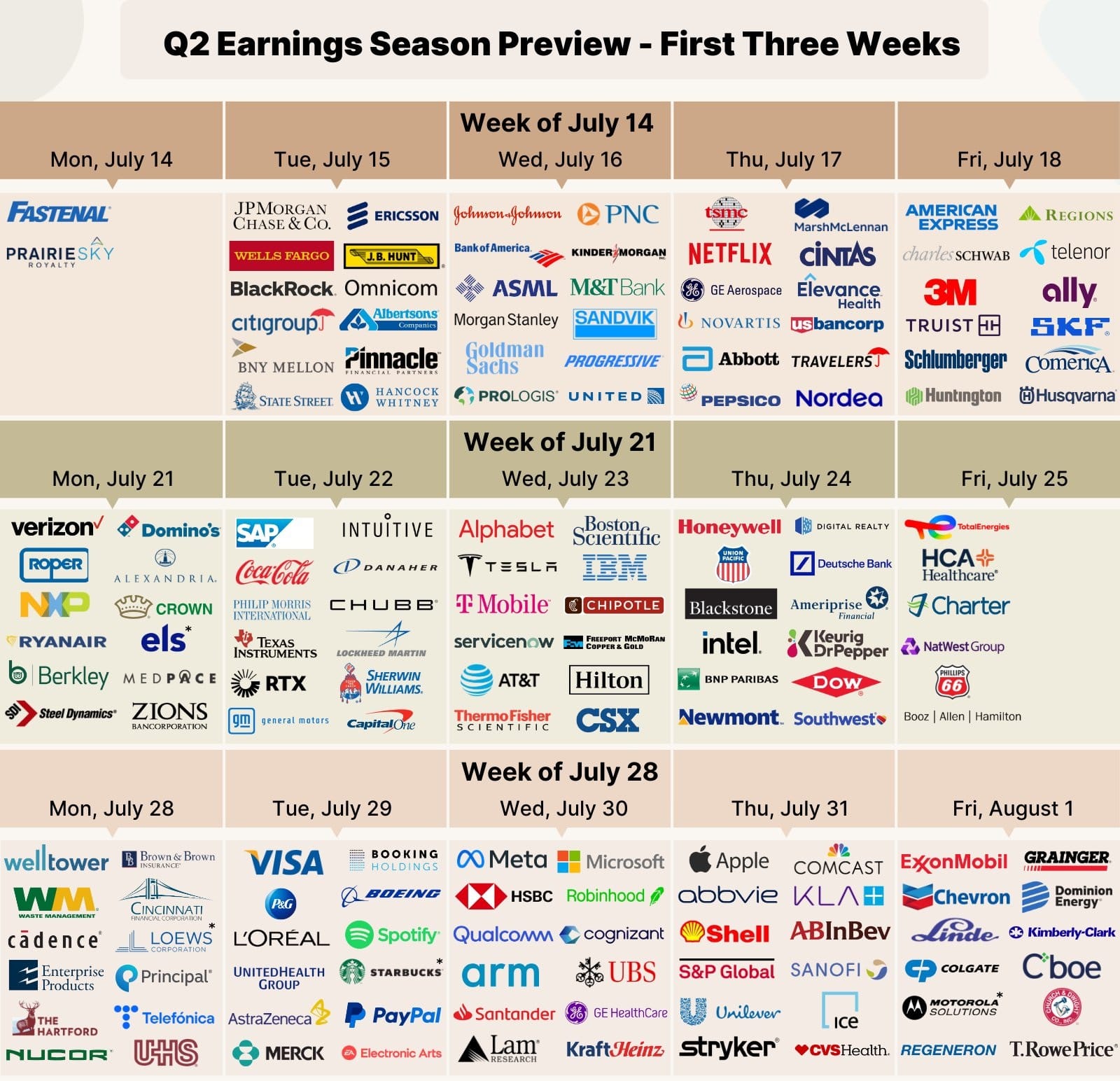Nasdaq Extends Record Streak
• NASDAQ logs 11th record close of 2025, rising 0.05% to 20,895; S&P dipped slightly, Dow -0.32% on week’s end.
• Gold climbs to $3,353 as Fed’s Waller backs July rate cut; yields and dollar soften, boosting safe havens.
• Housing data mixed: Starts beat at 1.321M, but completions plunge 24.1% YoY; sentiment edges up to 61.8.
• Europe & Asia diverge: DAX -0.35%, PBoC injects ¥1.3T, Japan CPI at 3.3%, China copper surges ahead of tariff date.
• IMF warns of global risks: Trade tensions, frontloading, inflation divergence; Trump eyes 15–20% EU tariffs.
• Crypto breaks $4T market cap: ETH tops $3,600, XRP hits $3.66 ATH, Coinbase $444 ATH, GENIUS Act boosts sentiment.











